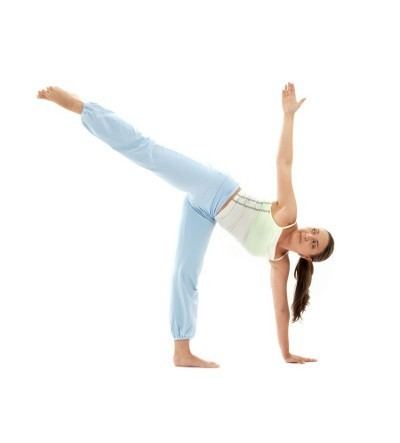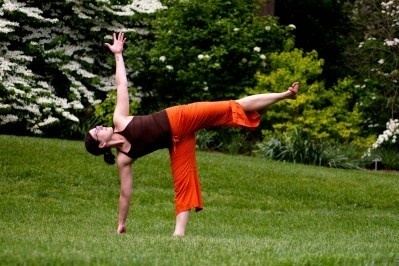Follow-up poses Parivrtta Trikonasana | Pose type Balance, Standing | |
 | ||
Note Consult a doctor before beginning an exercise regime Strengthens Vertebral column, Abdomen, Thigh, Buttocks, Ankle Stretches Shoulder, Vertebral column, Thorax, Hamstring, Calf, Groin Preparatory poses Trikonasana, Uttanasana, Vriksasana Similar Trikonasana, Half Lord of the Fishes Pose ‑ Ar, Uttanasana, Utkatasana, Utthita Parsvakonasana | ||
Ardha Chandrasana (Sanskrit: अर्धचन्द्रासन; IAST: Ardha Candrāsana) or Half Moon Pose is an asana.
Contents
Etymology

The name comes from the Sanskrit words Ardha meaning "half", Candra or Chandra (चन्द्र) meaning "moon" or "luminous, as in the light from the moon", and Asana (asana, Āsana) meaning "posture" or "seat".
Benefits

Like all standing balance poses, ardha chandrasana offers many benefits related to focus and proprioception, and strengthening of hip and knee muscles. This pose is particularly beneficial to the external rotators and stabilizers of the hip including gluteus medius and minimus, obturators (external and internal) and gemelli (inferior and superior). Abduction of the hip is achieved through concentric contraction of tensor fascia latae, gluteus medius and minimus on both legs (lifting one and stabilizing the other). Both legs engage articularis genu, hip flexors and quadriceps to maintain leg extension,to relax,help in improvement in sports, while the supporting leg stretches the gastrocnemius, hamstrings and gluteus maximus. Upper body stability is achieved by a number of paraspinal and core muscles like the abdominals and obliques (external and internal), while the chest is opened by the rhomboids, and trapezius and the arms are abducted by the deltoids, externally rotated by the infraspinatus and stabilized by the latissimus dorsi.
Variations

Parivrtta Ardha Chandrasana (Revolved Half Moon Pose), parivrtta (परिवृत्त) meaning "revolved" or "twisted". In Sivananda Yoga and its derivative styles such as the Bihar school, half moon pose refers to anjaneyasana, a pose used in the moon salutation series (Chandra Namaskar). In Bikram Yoga, half moon pose refers to a two-legged standing pose also known as Indudalasana.


